The Many Mothers of Ivy Puddingstone
Author Randy Susan Meyers has a new book hitting the shelves today, and she's here to tell us all about it
Hi readers,
Tuesday is the best day in a reader’s life—new releases hit the shelves, and authors hit the road, airwaves, and in print on their book tours, introducing readers to their latest books. Author Randy Susan Meyers is here to tell us about The Many Mothers of Ivy Puddingstone, her route to publishing, and much more. Welcome to SoNovelicious, Randy! I’m happy you are here and can’t wait to get to know more about you and your writing.
I’m excited to introduce you and your writing to readers. But first, tell us a little about yourself.
I’m delighted to be here; thanks for having me! I was born in Brooklyn, New York, where I quickly moved from playing with dolls to incessantly reading, spending most of my time at the Kensington Branch Library.
Early on, I developed a penchant for books about social issues. My dreams of justice simmered at the fantastically broadminded Camp Mikan, where I went from camper to counselor, culminating in a high point when (with the help of my strongly Brooklyn-accented singing voice) I landed the role of Adelaide in the staff production of Guys and Dolls.
Soon after my brief stage career, I was ready to change the world, starting with my protests at Tilden High and City College of New York, until I left to pursue the dream in Berkeley, California, where I supported myself by selling candy, nuts, and ice cream in Bartons of San Francisco. Then, world-weary at too-tender an age, I returned to New York, married at 19, and traded demonstrations for diapers when I was 21.
While raising two daughters, I bartended, co-authored a nonfiction book on parenting, ran a summer camp, and (in my all-time favorite job, other than writing) helped resurrect and run a community center. Once my girls left for college, I threw myself deeper into social service and education by working with batterers and victims of domestic violence. I’m sure my novels are imbued with all the above and my journey from obsessing over bad boys to loving a good man.
Many things can save your life—children who warm your heart, the love of a good man, a circle of wonderful friends, and a great sister. After a tumultuous start in life, I’m lucky to have all these things. I live in Boston with my husband.
I was intrigued with the premise of The Many Mothers of Ivy Puddingstone. Tell readers about your newest book.
Annabel’s journey begins in 1964 when she heads to Mississippi for Freedom Summer. There, the disappearance of her first love sparks a relentless fight for justice that will define her life. Years later, she, her husband, and four other couples—and their growing families— create a political collective, sharing a sprawling Boston house they name Puddingstone.
As social upheaval reaches a boiling point, the group relocates their children to the safety of rural Vermont, far from the chaos. The parents continue their activism, rotating visits to Vermont to care for the kids.
But not all threats come from the outside. Annabel’s daughter, Ivy, longs for something more than the patchouli-scented, organic world of Vermont. She craves normalcy, but most of all, she craves Annabel’s attention. When a cataclysmic event shatters their world, Ivy is forced to reckon with the limits of her many mothers and fathers. The Many Mothers of Ivy Puddingstone explores the fragile, tangled threads of familial love and communal bonds.
All your books have similarities to each other with stories about mothers, daughters, sisters, friends, found family, and more. This book adds to that by being historical—it goes back into the 1960s and works its way through several historical periods of unrest and political ideals. Where did the idea for this book come from, and were any of the historical aspects personal to you in any way?
I was at a neighborhood reunion party for ‘Mission Hill’ friends—the neighborhood in Boston where most of the novel takes place— when two women recalled their short-lived ‘children’s commune.’ The commune members took turns with childcare—traveling from Mission Hill, Boston, to Vermont.
They laughed, remembering how their children still made fun of it—my imagination went into overdrive, and I transmogrified their memory to ‘What if a woman wants nothing more than saving the world; her daughter craves normality.’
I developed a penchant for books rooted in social issues early in childhood. My earliest favorites were Karen and The Family Nobody Wanted, quickly moving on to Jubilee and The Diary of Anne Frank. At the age of eleven, I wondered why I couldn’t simply walk from house to house (across Brooklyn? America? The world?), explaining why racism, anti-Semitism, and other forms of hatred were wrong and horrid.
Much of the time depicted in The Many Mothers of Ivy Puddingstone were years I experienced, though I am younger than Annabel, the mother, and older than Ivy, the daughter. I had my first daughter at twenty-one, and during my life, I’ve lived in a communal situation in Boston, Berkley, and Pennsylvania. I shopped at a food coop, participated in endless meetings, and dreamed of living off the land (though I never came close.) I lived on the edges of what took place in this book. The Many Mothers of Ivy Puddingstone is my “what if”—what if I’d dived far deeper into my wants to save the world—what if I’d done the real-life equivalent of my nine-year-old dreams? And what if I’d gone too far?
You indicated you “lived on the edges” of what took place in this book. I imagine you had to do additional research for the depth of communal living you portrayed. What was your research process, and did you learn anything unexpected?
Balancing research and story in a novel that spans fifty-six years is challenging. Nothing matters more than story, character, and plot, and, in the words of Stephen King, you can’t capture a reader without “the gotta know,” but a novel resting on historical events requires grounding the store in solid facts.
Luckily, like most authors, I love research, reveling in discoveries of forgotten historical moments and lost hours, days, and weeks (years?) in piles of books that tempted me to force-feed readers huge information dumps. I knew to keep most of that whale below the surface, allowing it to inform my story without drowning it. I offered my research—for those who share my geeky need to learn more and more—in my author’s links at the back of the book and on a PDF on my website at randysusanmeyers.com.
Within my author’s notes are links to some events that were a revelation to me: most notably the riots that came in Boston—from the Boston Police’s overreaction to the work of ‘Mothers for Adequate Welfare’—a group that was active nationwide during the sixties.
Revisiting the times, I was also struck anew by the horror and the impact of the incident when, on “May 4, 1970, members of the Ohio National Guard fired into a crowd of Kent State University demonstrators, killing four and wounding nine Kent State students.”
You’ve written a post about your publishing journey in your Substack. I encourage readers to read it as it’s more in-depth and also shows your sense of humor. For now, tell readers the “Readers Digest Condensed” version of your publishing journey.
I was a victim of hubris via my published-too-young nonfiction book (I was about 25 when this was published.)
I wrote a novel that lacked subplots (according to the editors who liked it but didn’t buy it), but that got me an agent.
I wrote a far better book, which agent #1 didn’t sell, but that later broke me out—eventually titled The Murderer’s Daughters. (Originally titled Trick Against Crying—a title I still love and intend to use someday!)
I worked on two novels while I waited for agent #1 to sell something and then another. These eventually (with my soon-to-be agent) became novels # 2, The Comfort of Lies, and # 3, Accidents of Marriage.
I broke up with the first agent.
I met the right agent, and she sold The Murderer’s Daughters in 8 days.
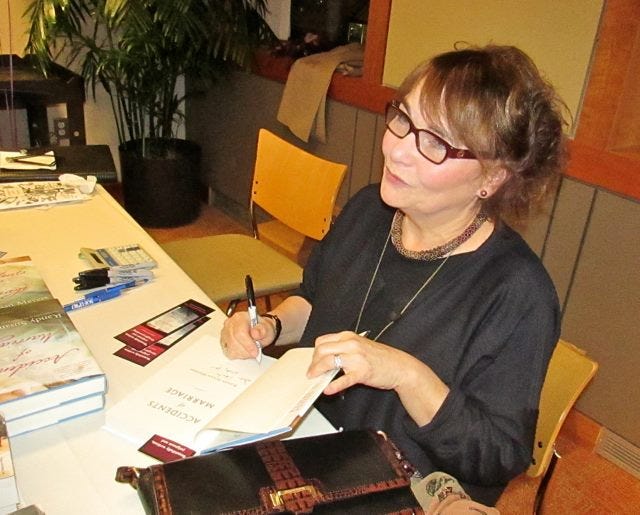
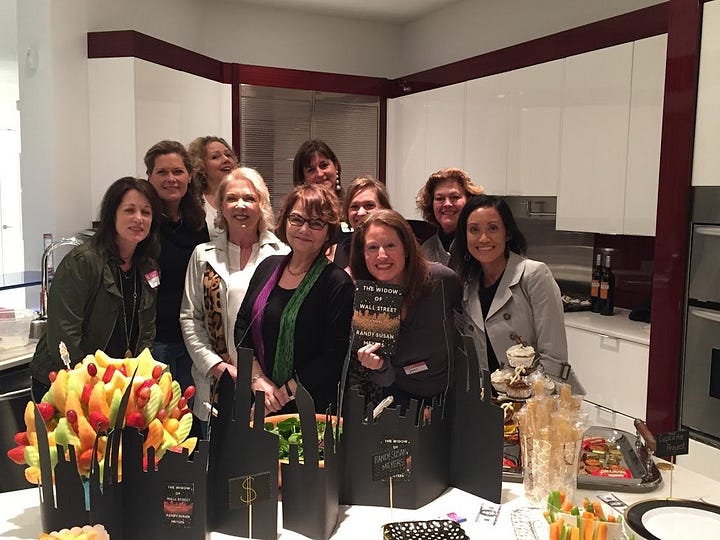
What's next for you—are you doing a book tour? Are you working on a new book? Can you tell readers anything about it yet?
Below is a list of planned events for my book launch. Readers can find more details and links to purchase signed copies on my website.
The book I am working on is outside my usual zone—while also within it. Though I can’t say much, it’s about a group of women who walk within us, ready to save the world when things go so amiss and dangerous that free choice is no longer an option.
I’ve heard it said that “writers are readers first.” What kinds of books/genres do you like to read? What is the last book you read?
I read constantly, voraciously, and broadly. I love literary fiction, thrillers, mystery, domestic drama, and humor. I’m also a big memoir fan. My most recent finish was a book I read to a blurb—and I adored it (I love all her books!) It was Francine's Spectacular Crash and Burn by Renee Swindle. My next-up read (I recently bought it at a reading) is Mama by Nikkya Hargrove. I’m listening to the memoir The Friday Afternoon Club by Griffin Dunne.
What one thing would readers be surprised to learn about you?
Perhaps, considering how much my novels are filled with Sturm und Drang and troubled folks, they might be surprised by how boring my life is—by design. After a tumultuous early life, my motto is “Be regular and orderly in your life, so that you may be violent and original in your work.” —Gustave Flaubert
What is your idea of a "great" day? What do you like doing for fun?
Keeping with the ‘boring, regular, and orderly’ Flaubert quote, a perfect day would include gardening (in 65-degree weather), reading a page-turning book, eating dinner (that I cooked the previous night—preferably a delicious soup or stew with homemade baking powder biscuits) with my husband—while we watch an unstoppably watchable show like Six Feet Under. But that day would be perfect if my house was perfectly clean!
Randy is active on social media, and you can find her at the following places: Website | Newsletter | Facebook | Instagram. Her newsletter is fun to read; there is lots of bookish content, more writing tips, and the occasional peek into her real life.
Readers, if you are in Massachusetts, you have several opportunities to see Randy in person at libraries and independent bookstores. Nothing is more fun than meeting a favorite author and getting your book signed. Randy is also available for book club events. You can order her book at Bookshop.org, Amazon or purchased signed copies from Belmont Books and Papercuts.
Randy, thank you so much for the opportunity to get to know more about you and your newest book. I enjoy reading books about families, mothers and daughters, and friends, and several of yours that I’ve read have been some of my favorites. The description of your next book has intrigued me—I can’t wait to read it. I hope you have a wonderful book tour and continued success in the publishing world!

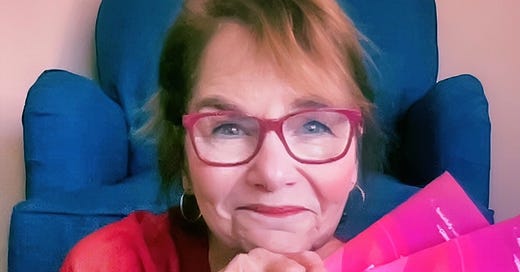



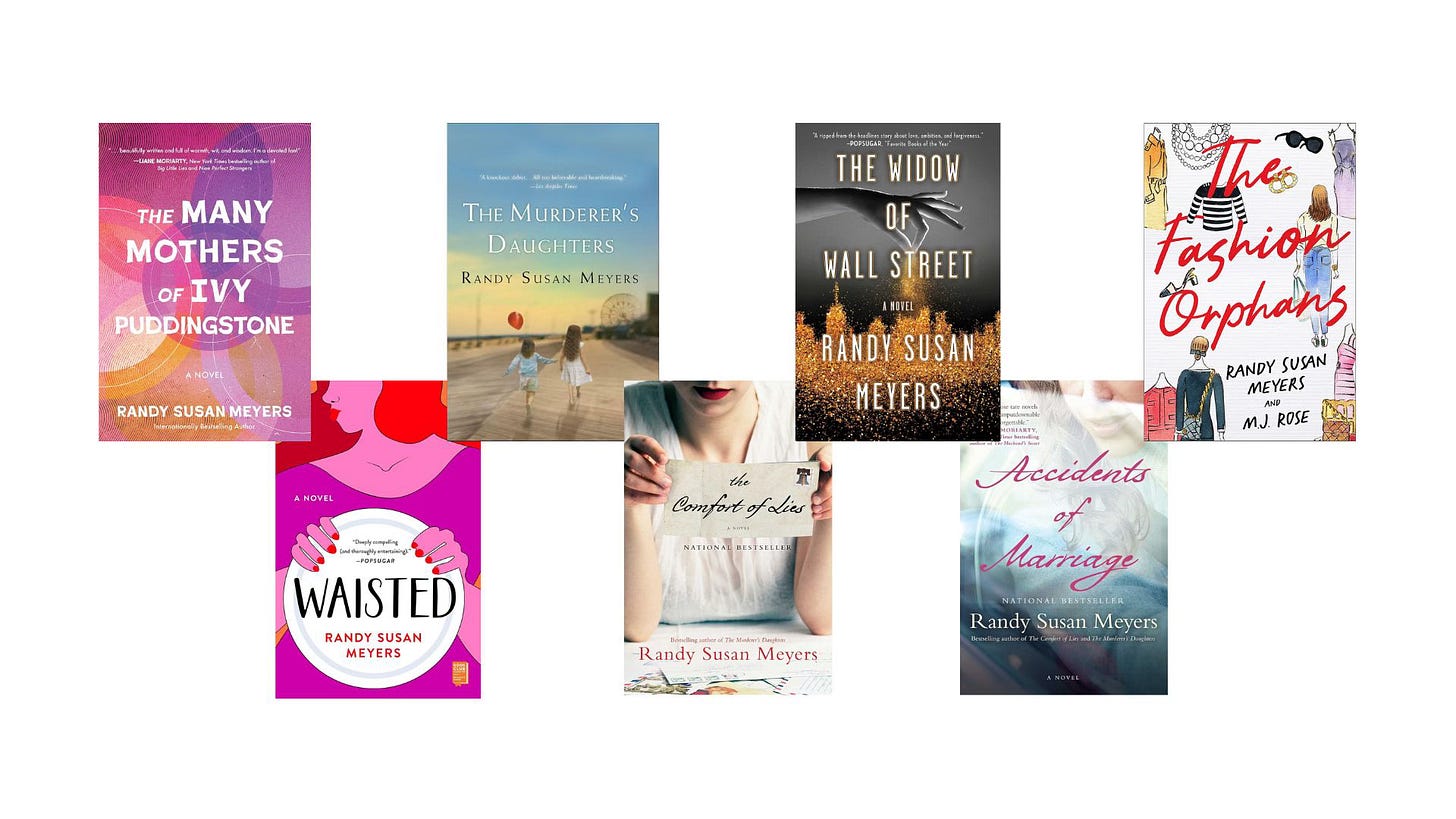
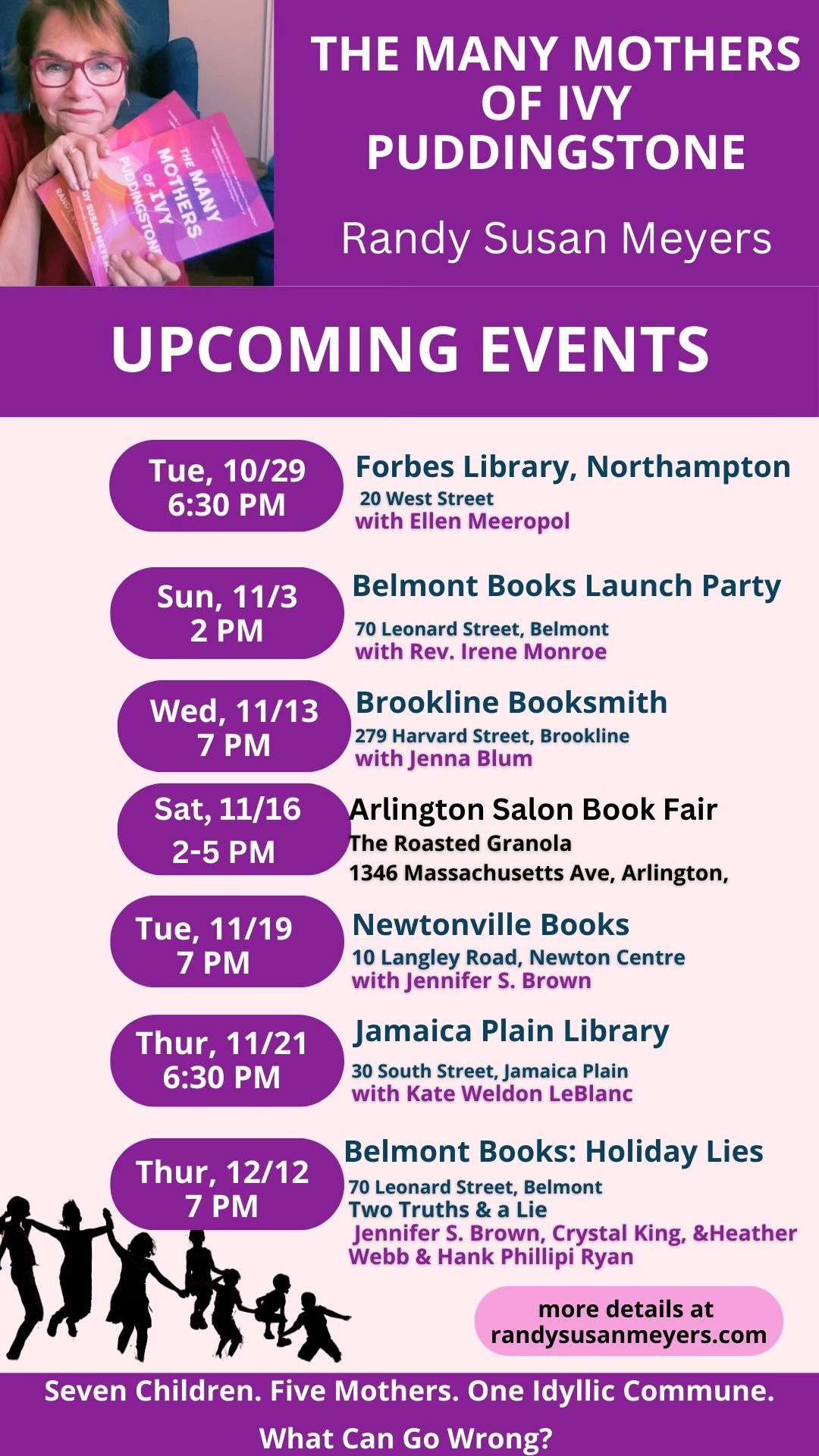
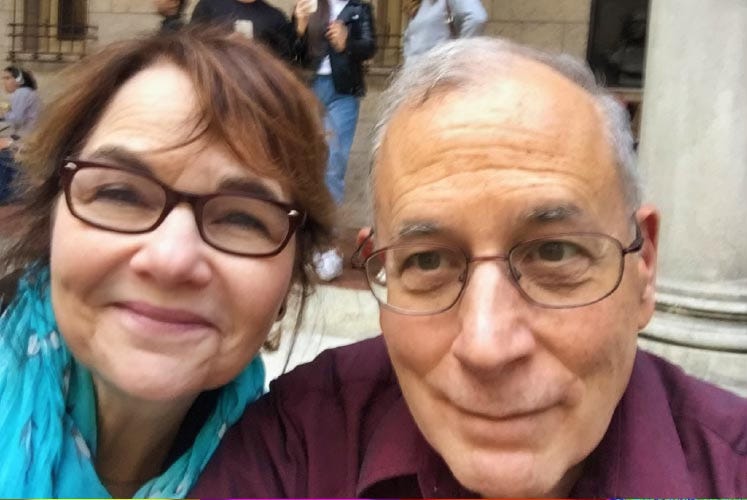

This is funny. I'm obsessed with pudding stone rocks found in Michigan. I only recently discovered them and am starting on the hunt. When I saw the title to the new book I got so excited, which was in part why I clicked on the read. Of course one had nothing to do with the other, but I'm buying the book anyway to explore! Sometimes inspiration comes from strange places.
Thank you Randy and Gayle! Very interesting.